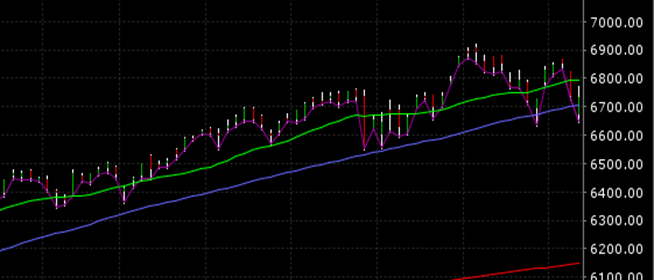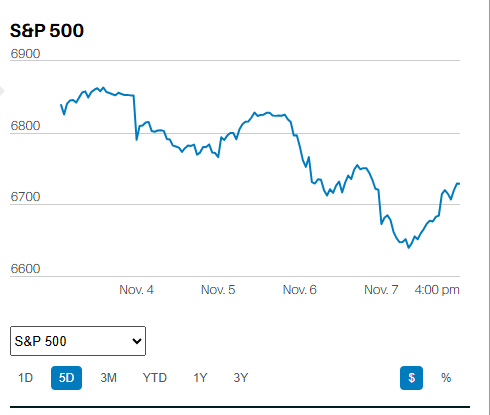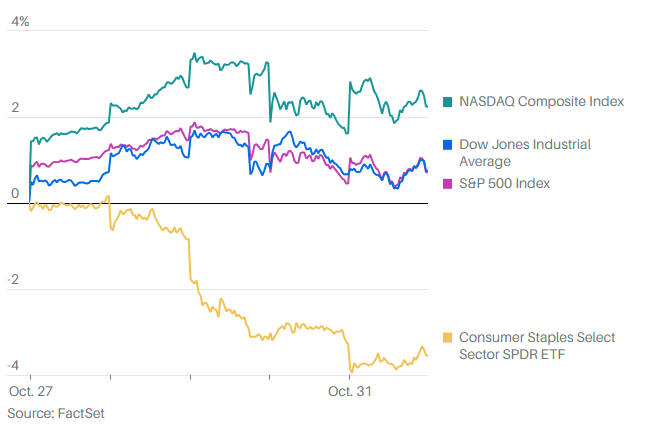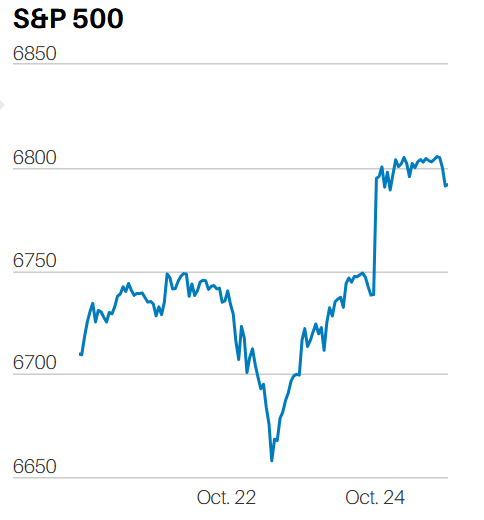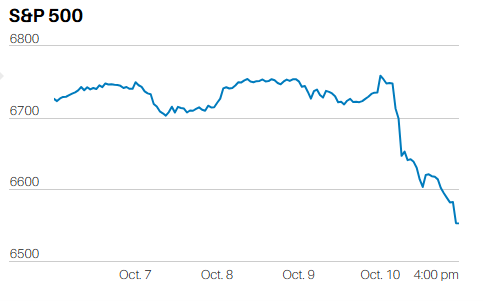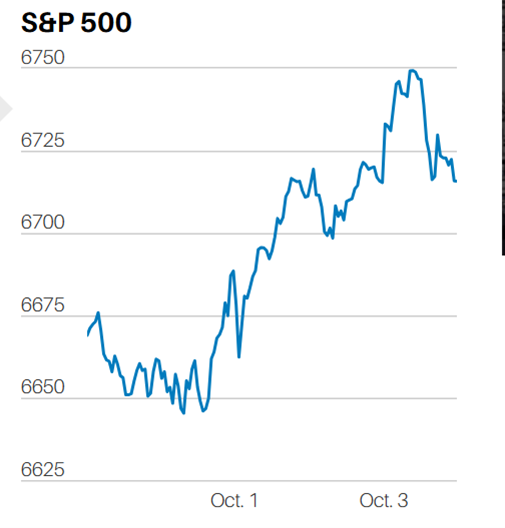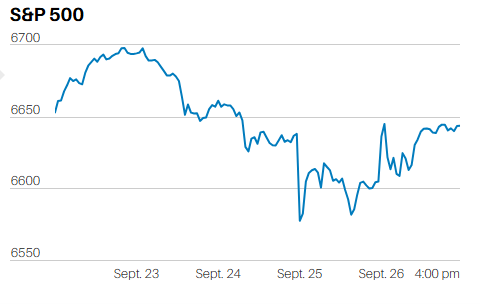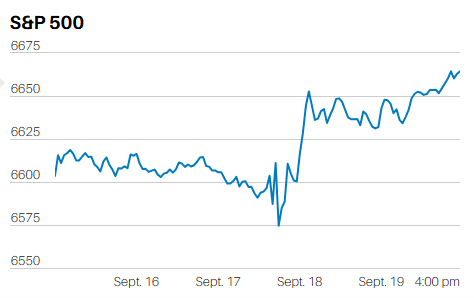Recency bias leads to mistakes

Market Update
The S&P 500 fell for the seventh week in a row. It lost 3% and is down 18.7% from its all-time high. The Dow Jones Industrial Average has declined eight weeks in a row. The Dow hasn’t fallen eight weeks in a row since 1932. The Nasdaq fell 3.8% last week and is down 28.2% from its January high.
We wrote last week that the most likely path for the S&P 500 was a bear market rally back toward 4100-4200 before a retest of the 3858.87 low. The index hit 4090.72 on Tuesday before selling off. It bottomed at 3810.32 on Friday, reaching a new low and confirming the downtrend. Lower lows and lower highs are the definition of a downtrend. The 3810.32 low touched the bottom of the trading channel once again. (See chart above). The S&P rallied 2.4% in the final 2 ½ hours of trading Friday. It’s a toss-up whether the algorithms will attempt to push the index higher on Monday before another sell-off hits. Instead, investors might push the sell button from the get-go. Regardless, we will likely see a retest of the 3810.32 low sometime in the coming week.
The S&P 500 trades at 16.6 times 12-month forward earnings, down from 21.5 times in January. The index has traded for 15.5x 12-month forward earnings on average over the long run. Earnings estimates are likely too high though. Margin pressure from inflation is leading to earnings disappointments. Last week both Walmart and Target missed on earnings due to margin compression. They won’t be the only companies to miss their earnings estimates in the coming quarters.
The current consensus for 2022 earnings is $228.58, putting the S&P 500 at 17x 2022 earnings. The current consensus for 2023 is $251.06 or 15.5x earnings. Price-to-earnings multiples are reasonable once again. Earnings misses will likely lead to further selling though. Declines often take markets into undervalued territory. Earnings misses make that more likely as disappointed investors sell.
It is the madness of crowds that dictate short-term market movements, not fundamentals. By some measures, sentiment is suggesting it is time to buy. Michael Hartnett is the chief investment strategist at BofA Securities. He points out that the BofA Bull & Bear Indicator has fallen into “unambiguous contrarian territory.” But Evercore ISI strategist Julian Emanuel wants to see more signs of exhaustion, according to Barron’s. He’d like the Volatility index (VIX) to top 40. He’d also like a put-call ratio over 1.35 and a large volume day to signal the selloff is ending, Barron’s writes.
Market timing is tricky. Buy too soon and suffer heavy losses. Buy too late and miss large gains. The S&P 500 gained 39% on average following the previous losing streaks of seven weeks or more, according to Frank Cappelleri, chief market technician at Instinet. Norwood Economics recommends buying good companies on sale whenever you find them. Ignore what you think the stock market might do.
Economic Indicators
Retail sales at U.S. retailers rose 0.9% in April. Real sales rose as well after adjusting for inflation. Real sales rose 0.6%. Prior month sales were adjusted higher, rising 1.4% up from an originally reported 0.7%. Consumers account for about 70% of spending and retail sales are a big part of consumer spending. Strong real retail sales in March and April point toward a strong economy. Meanwhile, industrial production rose 1.1% in April. It rose 0.9% in March.
The leading economic indicators fell 0.3% in April after rising 0.1% in March. The LEI is a weighted gauge of 10 indicators. The index is designed to show whether the economy is getting better or worse. The leading index is in line with a moderate growth outlook in the near term, according to Ataman Ozyildirim, senior director of economic research at the Conference Board.
Recency Bias
Recency bias is one of the behavioral biases found in all of us. We are not built to make sound financial decisions. Our brain tricks us at every turn. Status quo bias is a classic example. We don’t like change. Status quo bias is the source of several well-known sayings. “A bird in the hand is worth two in the bush.” “Better the devil you know than that one you don’t. The endowment effect is another powerful bias that leads to irrational pricing. A coffee mug is worth more to you once you own it. It is the same $10 coffee mug but now it is your coffee mug.
Recency bias is placing too much importance on events that are more recent. Recency bias can cause 401(k) participants to make poor choices. I’ve had a number of 401(k) participants ask me recently if they should stop deferring into their 401(k) since the market is falling. “What’s the point of putting money into my account when it’s just disappearing?” one participant asked me last week. “I should stop my deferrals,” he went on to say. “I’d be better off putting my money into a savings account than my 401(k),” another told me. “I’ll have more money when I retire since I won’t be losing it in the market,” they said.
Wrong! Wrong! Wrong! The S&P 500 rose by double digits three years in a row before 2022. Investors made a lot of money. The S&P finished 2018 at 2531.94. It is up 54% since then even after the 18% decline in 2022. Perhaps the S&P falls all the way to 3,000 during the current downtrend as some strategists are forecasting. Even then an investor will have earned 18.5% plus dividends since December 31st, 2018. Let's call it 24.5% including dividends. Divide 24.5% by four and you get 6.1% annually, far more than you can earn in a savings account.
Furthermore, the S&P 500 will be trading for around 12 times 2023 forecast earnings if it ends 2022 at 3,000. Cut the $251 current earnings estimate by 20% and the S&P would still be trading at only 15x earnings if it falls to 3,000 by year-end. The likelihood of earning double digits in the stock market from 3,000 over the following several years would be high. Perhaps it takes three years to regain the 4818 all-time high. A 60% gain over three years is 20% per annum. A 401(k)participant would be deferring and buying stocks the entire time. Their 401(k) account would grow to a personal all-time high sooner than 2025. We’ll ignore that though and stick with 4818 in the S&P by 2025. Your total return from December 31st, 2018, until December 31st, 2025, would be about 100%, including dividends but ignoring additional earnings from additional savings. A 100% gain over a seven-year period is 14.3% per annum. Try to earn that in a savings account!
Regards,
Christopher R Norwood, CFA
Chief Market Strategist
